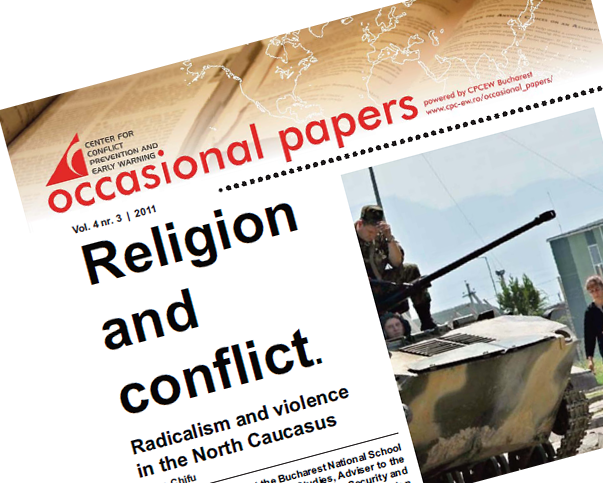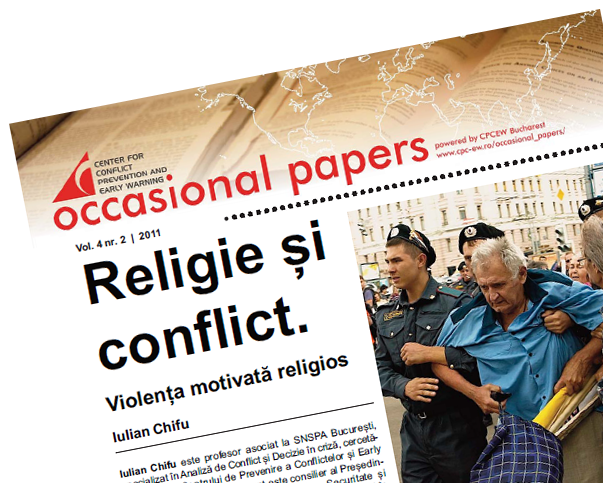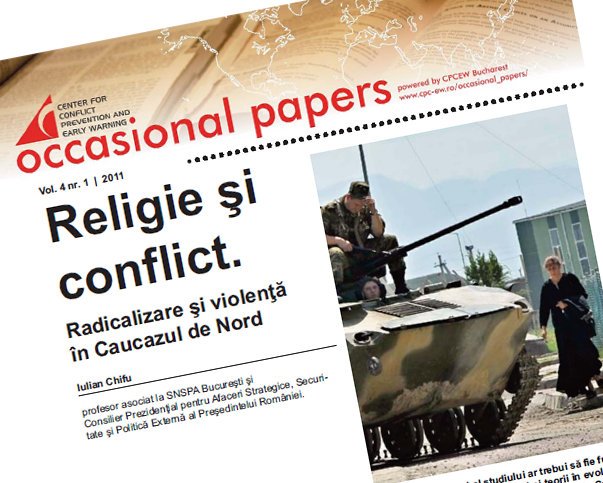by Radu Arghir
Ingushetia has long been one of the focal points of the North Caucasus insurgency. The relatively small province was very active in terms of terrorist activity, and, even if it was smaller that its neighbors and had a higher population density (therefore making it an unlikely hiding place), it served as hiding place for many leaders of the North Caucasus insurgency. The fact that the insurgency as a whole has a religious component is well known; however this does not mean that this component has any popular support in Ingushetia. In fact there were other (secular) reasons that drove the insurgency so far, but this may change. In recent years the strength of the insurgency has waned but it still remains active and it may resurge, this time with a stronger religious component. I will explain how, but first let us focus on the insurgency itself.
Read complet
More
Stavropol Krai
Stavropol Krai is the only predominantly ethnic Russian region included in the North Caucasus Federal District (NCFD). Because of its contemporary geopolitical position, at the center of the North Caucasus, contiguous to a majority of the republics of the area, Stavropol Krai occupies a special place in the strategy for Russia’s territorial development[1].
Most of its territory is steppe-like with a marked trend toward drier grassland to the south and east. The rayons on the borders with Kalmykia and Dagestan are sparsely populated, with sheep-herding as the major agricultural activity. To the northwest, large farms (formerly kolkhozy), dominate in the chernozem soils. Here, grains are the main product. In the south of the region lies the piedmont, of which the southwestern part known as Kavkaz Mineral’nyye Vody (Caucasian Mineral Waters) is a region of spa and resort cities that developed during the early to mid-19th century.
Because it is a region with attractive urban and rural opportunities for employment in the immediate vicinity of conflict zones, it has become a primary destination for migrants. Stavropol city and Krai have historically been known as an advance post of Russia in the Caucasus, with the Krai mirroring numerous contemporary ethnic-demographic and migration problems of the North Caucasus region and, more generally, of the entire country.
Read complet
More
 Post-Soviet Insecurity And Unrest In Russia’s North Caucasus Borderlands: Sources, Implications And Some Policy Recommendantions
Post-Soviet Insecurity And Unrest In Russia’s North Caucasus Borderlands: Sources, Implications And Some Policy Recommendantions
North Caucasus (hereinafter, NC) has been the most troubled part of the Post-Soviet Russian Federation (RF) due to historical, ethnic, religious and socio-political reasons dating back to the even pre-Soviet times. Unfortunately, NC is mostly known for its ethno-religious and political instability rather than its rich multicultural composition and scenic beauties which, otherwise, would promote the region as a noteworthy point of the world’s cultural and geographical heritage.
Achievement of stability and prosperity in the NC would be a beneficial target for all not only in the region but the rest of the world. However, despite the ostensible simplicity and desirability of this win-win objective, policies and attitudes of all interested parties ranging from the local inhibitants to Russian leaders and the West, do not necessarily end up in a coherent sum in reality. Examples of competition and cooperation exist simultaneously. Yet, there are a few examples of opportunity windows like Moscow’s recent adoption of socio-political reform initiatives or Russian-Turkish rapprochment or the European Union’s (EU) relatively growing interest in the region. These factors would help stabilize and further open the region to the world especially in a Western-style orientation. The responsibility of eliminating instability in the region lies foremost with the Russian leadership. Next, local inhibitants and international community bear their own responsibilities. Problems and their possible solutions in this region would also teach us some lessons that might help us explain and solve similar ethno-religious radicalization issues in other parts of the world through a longer historical perspective.
This chapter will examine the multiple historical, ethno-religious and socio-political roots of the instability in the NC and provide a discussion of its implications for the wider world in addition to a few policy recommendations for all major interested parties.
Read complet
More
Lately, the North Caucasus has become a major attraction point due to the large number of events and to the worrisome trend in the region, with larger impact on the Russian Federation, on the one hand, and on the Wider Black Sea Region, on the other, as well as on the overall fight against terrorism. The themes surrounding this subject are various, so researchers need to pay a great deal of attention to several areas of study as well as access various bibliographical references in order to provide an in depth evaluations.
We underwent such a process and found it useful to publish both a compendium of bibliographical resources as well as the results of the research in order to reveal new directions and original perspectives for opening new angles for future research that will encompass the interpretations of further developments. Of course, the study financed through a larger on going German Marshall Fund Black Sea Trust project could not do without an extended general structure.
The final goal of the study is to supply a base of evolving information, ideas and theories to support the evaluation of the situation in the North Caucasus and to act as starting point for any projections regarding the area as well as larger themes defining the complexity of the region. The other goal is to foresee, based on these qualitative theories and trends, where this road is heading and in which way the current situation will evolve, to what extent it will remain a local issue or it will affect the entire region; it’s also interesting to see whether the essential elements present here are to be found in other areas of the world, whether they represent grounds for much larger phenomena.
citeste articolul complet în Occasional Papers nr.3 vol 4
More
The modernization and globalization came with challenges to the identity needs of the persons, both individual and group identities, and there is a search for moral values and references, which should come from the big religions and from the combination and balance of religion and cultural background, national traditions and humanitarian behavior. The tendency of accessing a comfortable and desired group identity is to be assumed by the secular form of religion and tolerance of free spirit, competitive ideas and acceptance for scientific input in the debate. Multiculturalism has to respond to these problems as well. Some are side effects of multiculturalism, some are a wrong interpretation of the multicultural model.
Individual identity and group identity are both needed by the individual. There is a huge versatility in shifting and choosing the group identity, the one which is the most appealing for the individual. Sociological and psychological studies on the suicide bombers that failed, in jails all over the world, revealed some patterns: high individual identity problems, need for a group identity, for prestige, for meaningful life, and that what leaded to conversion, radicalization and moving to the actions.
We are witnessing several trends in the post-modern world: Immigration and alienation in big cities, inadaptability at the second and third generation immigrants and some new forms of radicalization in Germany, France, the US. The second would be the phenomenon of convertion to either radical forms of religions, Jihadist ones – or so called “new religions” – Apocalyptic, Hedonistic or Satanist ones. The problem still stands in the hands of the big religions of the world. They became more and more commercial institutions – selling faith and moral comfort, and less – and less moral references models. That leads our citizens to move to find other alternatives, and falling in the hands of radical Islam, Jihadist sects and crocs in other types of cults and newly born religions.
citeste articolul complet în Occasional Papers nr.2 vol 4
More
Caucazul de Nord a devenit un punct major de atracţie, în ultima vreme, prin prisma numărului mare de evenimente şi a trendului îngrijorător care este sesizabil în regiunea în cauză, cu impact mai larg asupra Federaţiei Ruse, pe de o parte, dar şi asupra Regiunii Extinse a Mării Negre şi chiar pentru lupta generală împotriva terorismului. Suma de teme conexe subiectului este extrem de variată, iar un cercetător atent şi prospectiv, pentru a avea adâncime în evaluările sale în timp, trebuie să parcurgă multe domenii de studiu şi o bibliografie bogată pentru a putea acoperi subiectul.
Am făcut o asemenea întreprindere şi am considerat utilă publicarea atât a unui compendiu al resurselor bibliografice ale temei, cât şi a unor rezultate ale acestei întreprinderi, a tezei/tezelor centrale ale studiului, pentru a releva direcţii noi şi moduri inedite de abordări de perspectivă, ca teme de cercetare viitoare, dar şi a deschide apetitul cercetătorilor pentru a se apleca asupra tuturor acestor unghiuri pentru a putea surprinde direcţia şi nuanţele de desfăşurare ale acestor evenimente. Evident că şi o structură generală a studiului extins nu putea lipsi din acest sumar al unei cercetări elaborate, finanţată printr-un proiect mai larg al Black Sea Trust al German Marshall Found, în curs de derulare.
Scopul final al studiului ar trebui să fie furnizarea unei baze de informaţii, idei şi teorii în evoluţie pe care se sprijină evaluarea privind situaţia din Caucazul de Nord şi care pot fi temeiurile oricărei proiecţii prospective astăzi în legătură cu zona, dar şi cu teme mai largi care se conjugă pentru a da complexitatea regiunii. Apoi ţinta finală este aceea de a răspunde, pe baza acestor teorii şi trenduri cu valoare calitativă, care e drumul pe care merge acest curs şi spre ce realitate se poate îndrepta situaţia curentă, în ce măsură ea va rămâne la nivelul unei probleme locale, cât de mult va afecta regiunea şi dacă nu cumva elemente esenţiale ale subiectului şi temei sunt de regăsit şi în alte zone ale globului, dacă nu cumva constituie temeiuri pentru fenomene mult mai largi.
Fără a avea pretenţia de a acoperi pe de-a-ntregul problematica, am considerat util să aducem la zi experienţa noastră şi să deschidem subiectul cercetării oricui vrea să urmeze acest siaj, ale cărei trenduri crează suficiente motive pentru a presupune că ascund fenomene cu valoarea universală şi globală. Am utilizat pe scară largă teorii diverse şi idei multiple, realizând o supra-esenţă asupra căreia revendicăm paternitatea şi reuşind, spunem noi, să dăm un sens şi un răspuns la întrebarea cum va evolua problematica în viitorul pe termen mediu, 5-10 ani.
vezi articolul complet din Occasional papers nr. 1/vol.4
More







